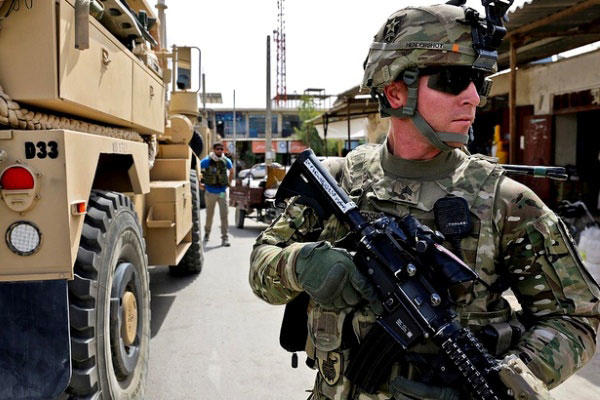The U.S. Army will soon replace its digital, Universal Camouflage Pattern, but soldiers may still be wearing the service's Afghanistan pattern for many years into the future.
The Army's recent decision to authorize the 75th Ranger Regiment to wear MultiCam in garrison has triggered questions about the pattern's future as the service prepares to transition to its new Operational Camouflage Pattern in 2015.
The new OCP is very similar to MultiCam, a pattern made by Crye Precision that the Army adopted for use in Afghanistan in 2010.
It's similar to MultiCam because Crye developed the pattern with the Army for its Objective Force Warrior program in 2002. He later made small adjustments to the pattern for trademark purposes and called it MultiCam.
The unique blend of greens, browns and tans has been a favorite of Special Operations Command for almost a decade. MulitCam has also proven extremely effective in several Army studies.
Army leaders are considering whether to allow soldiers to wear MultiCam alongside the new OCP, but no decision has been announced, according to Army officials.
Never before has the Army introduced a new camouflage pattern that is so close to one that it has already issued to soldiers in great quantities.
So far, the Army has spent between about $3 billion on uniforms and individual equipment printed in MultiCam since its adoption four years ago, according to a source familiar with the issue.
From a practical standpoint, the source said, both patterns are so similar that it would be very difficult to keep soldiers from wearing MultiCam uniforms and equipment such as packs, pouches and other essentials.
Describing the two patterns has been confusing from the beginning since both go by the same acronym. The Army calls its new Operational Camouflage Pattern OCP. The service officially refers to MultiCam as the Operation Enduring Freedom Camouflage Pattern, but it has always been called OCP for short since its adoption in 2010.
The Army considered replacing its ineffective Universal Camouflage Pattern with MultiCam after wrapping up its multi-year camouflage improvement effort last year.
Army officials even tried to buy the rights to MultiCam, but negotiations broke down over cost.
MultiCam was among the finalists of the Army's Phase IV camouflage testing effort. Other finalists included ADS, Inc., teamed with Hyperstealth, Inc.; Brookwood Companies, Inc.; and Kryptek, Inc. When the testing was complete, there was no definitive winner. None of the four patterns clearly outperformed one another through all the test environments.
MultiCam, however, has been strong performer in camouflage testing over the years.
The pattern emerged as the clear winner over several other patterns to issue to soldiers deploying to Afghanistan.
Congressional pressure prompted the Army to launch its camouflage improvement effort in 2009. Pennsylvania's Democratic Rep. John Murtha, who was then chairman of the House Appropriations Subcommittee on Defense, pushed the service to look for a better camouflage pattern after receiving complaints from sergeants about the UCP's poor performance in the war zone.
Some test community officials maintain that the 2004 adoption of the UCP was a mistake that could have been avoided, saving the Army billions of dollars on uniforms and matching equipment.
Two separate studies performed by Army scientists from Natick Soldier Systems Center, Mass. -- one completed in 2009 and the other in 2006 -- showed that the UCP performed poorly in multiple environments when compared to other modern camouflage patterns.
In both studies, MultiCam outperformed UCP.
Critics of the Universal Camouflage Pattern maintain that the service has spent $5 billion on uniforms and equipment all printed in the inadequate UCP. The Government Accountability Office estimated that the Army will have to spend another $4 billion on uniforms and equipment over the next five years on its new camouflage effort.
The Army plans to field its new camouflage pattern next summer, but the service will still need to navigate through an expected set of Congressional hurdles before the it can officially replace UCP. Last year, Congress mandated that services can no longer introduce new camouflage patterns unless they can be used by all four services.
-- Matthew Cox can be reached at matthew.cox@monster.com



























